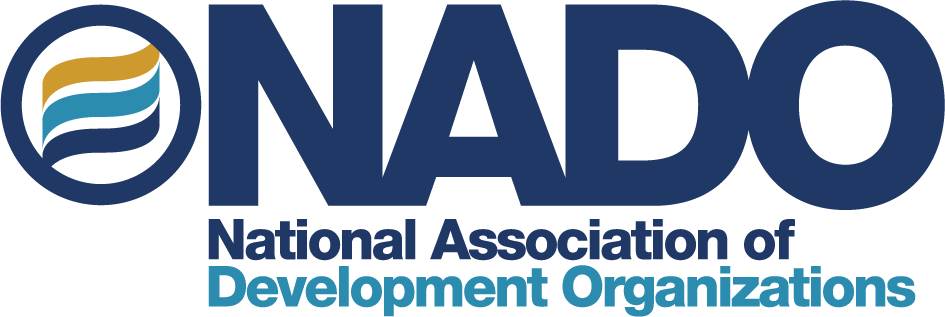On August 25, 2011, the National Association of Development Organizations (NADO) Research Foundation held the RPO America Peer Symposium in Washington, DC. This event was sponsored by the Federal Highway Administration (FHWA) and was held in conjunction with the 2011 National Rural Transportation Peer Learning Conference, an annual meeting organized by the NADO Research Foundation and Development District Association of Appalachia. The Symposium brought together transportation professionals from across the nation and addressed how rural and small metro regions and their partners have improved the planning and implementation process of vital transportation projects by strengthening communications and collaboration across state, regional, and local agencies.
The symposium began with a keynote presentation by David Cole, an independent consultant who has worked both at the state level as Maine DOT Commissioner for seven years, and at the regional level as Eastern Maine Development Corporation as President and CEO for eight years. With a dual background in transportation and economic development, he presented ideas for moving projects forward in a challenging environment of limited funding and micro-level concerns. To achieve success, Cole emphasized a “3P” approach: forces shaping transportation policy, a regional role in Maine DOT planning, and innovation on a project level.
1.) Forces shaping policy: Three in particular are important: a) funding levels and uncertainties, b) the condition and functionality of the system, and c) public involvement and expectations. Maine DOT has a 10-year unmet financial need, even as the state received federal American Recovery and Reinvestment Act (ARRA) funds and proceeds from the biggest state bond issue in history. Cole said, “We might as well resign ourselves to the fact that we’ll have to think out of the box, be very imaginative, and set priorities to do the tough stuff. I don’t see any silver bullet out there.”
In strong exporting nations such as Germany, using a macro-level approach works well; amenities for workers exist alongside the nation’s continuing strength as a manufacturing center. Through the National Export Initiative, President Obama has called for this, with a goal of doubling the exports of the U.S. by 2014. However, Cole says, our infrastructure is falling behind and we will be unable to ensure these new manufactured goods can reach ports and get to other nations, so we must invest in that to stay competitive. The micro-level approach is important as well, knowing distinctive regional assets and being aware of local economic drivers in addition to global ones. Linking economic development, transportation, and land use are central to this, as are connecting economic development to arts and culture.
Under Cole’s tenure as commissioner, Maine DOT used the state’s regional economic development districts and planning organizations as the model for regional collaboration and actively promoted cooperation between the state and regional entity.
2.) Regional role in Maine DOT planning: Connecting Maine, the state’s long-range transportation plan, was the regional collaboration vehicle, which meant setting priorities to take advantage of the limited funds available, process started in 2003 and was completed in 2008 to drive everything Maine DOT did. Thirty-eight Corridors of Regional Economic Significance for Transportation (CREST) projects were identified, recognizing that many multimodal corridors serve multiple functions, such as a main street for some users and mobility corridor for others.
ARRA funds were targeted to move CREST projects that had been shelved due to limited resources. For example, a border crossing with Canada, St. Stephens-Calais, was the first new crossing constructed in 30 years, to relieve congestion that choked commerce.
3.) Innovation on a project level: Six examples serve to illustrate Maine’s innovative approaches to transportation and its connection to economic development:
- The Penobscot Narrows Bridge opened in 2006 after only 42 months of work, to replace the badly deteriorated Waldo-Hancock Bridge (the only road crossing of the Penobscot River south of Bangor), which was a beloved landmark in the local area. High expectations existed for the new bridge, with residents feeling they were “owed” a great replacement because the old one had reached such a poor condition and was closed relatively abruptly. Instead of giving the public every detail they wanted (which would have been more expensive to build and maintain) one highly visible amenity, an observation deck at the top of one of the bridge’s towers, was included in the design. This helps drive tourism represents an early success in integrating economic development with transportation.
- Interstate 295, the highway link between Augusta and Portland, was deteriorating quickly. Maine DOT closed the entire stretch to speed rehabilitation, rather than taking six years to complete one lane at a time. Closing the interstate required using an adjacent state highway as a reliever route, a decision that was popular after completion but not at first. Cole advised, if you get public buy-in, such grand plans are possible; Maine DOT needed to collaborate with the tourist industry and media helped to get the public on the DOT’s side and make a quick fix work.
- An 87-mile rail-to-trail project brought lots of opposition from rail advocates, and strong support from cyclists; Maine DOT had been spending funds on maintaining unused track that would need replaced in order to become a freight corridor again. The game changer in the project was to also allow snowmobiles and ATVs to also use the trail; significant public involvement from state’s regional economic development districts and planning organizations helped to satisfy concerns of the public and law enforcement.
- The Aroostook Railroad, which connects the forests of northern Maine and Canada with the ports of southern Maine, was in danger of being cut off by railroads not interested in continuing maintenance. Via the acquisition of trackage rights, the Maine DOT kept the last-mile connections for railroads to pick up and drop off freight; having the public on DOT’s side was instrumental, with which the Northern Maine Development Commission assisted.
- The University of Maine AEWC Advanced Structures and Composites Center developed a “bridge in a backpack” prototype of composite arch bridges being constructed from extremely portable materials, a rare instance of transportation research funding driving economic development. Such bridges are now being built all over Maine and will be piloted in other New England states soon. This invention received recognition from the American Society of Civil Engineers, American Association State Highway and Transportation Officials, and other organizations for its innovative design and low cost. Maine companies are now constructing another bridge in Boothbay Harbor, based on technologies prototyped at the AEWC Composites Center.
- Searsport Island is a roughly 1,000-acre site that had been proposed for a number of uses in politically charged debates for decades (including preservation, nuclear power, and freight), so Maine DOT negotiated a compromise with local communities and environmental groups to develop half as a deep-water, double-stack-capable port and convert the remaining area as a preservation easement to forever be green space and also serve as a buffer from the industrial area. The compromise has worked well for everyone, allowing expanded exporting capacity that directly supports economic activity while preserving natural space.
In sum, Cole notes: “If you’re not into exporting, you’d better be looking at it. Because the reality right now as a nation, with our balance of payments and our fiscal situation, we have to be more involved in exporting. As a result, our infrastructure will have to be looked at in new ways. For example, some old railroad lines all may become viable again, but not perhaps in the same way they were before.”
For more information, visit:
- NADO Research Foundation (2011) CONNECTING THE D•O•T•S, A Guide for Connecting with Your Department of Transportation, by David Cole
- Maine DOT
This case study was researched and written by NADO Research Foundation Graduate Fellow Jonathan Tarr and Associate Director Carrie Kissel and is supported by the Federal Highway Administration under contract number DTFH61-10-C-00050 through the NADO Research Foundation (www.RuralTransportation.org). Any opinions, findings and conclusions, or recommendations expressed in this publication are those of the author and do not necessarily reflect the views of FHWA or the NADO Research Foundation.


